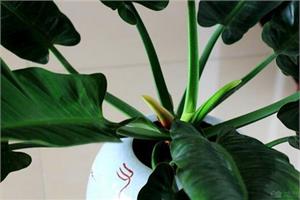How to raise African impatiens? is it poisonous?
We know that there are too many kinds of flowers on the market, for example, in the application of herbaceous flowers in Europe and the United States, this kind of African impatiens can be said to rank first. And this kind of flower also provides a wide range of bright colors, most importantly, it also has a very strong growth, and it is also very simple in terms of management. The following editor will introduce to you how to raise African impatiens and whether they are poisonous?

How to raise African impatiens
1. Soil: the potted soil of African impatiens must choose loose and fertile sandy loam, such as peat soil with 1 peat soil or rotten leaf soil with sandy loam 2. At the same time, it is better to add some rotten cake powder or market chicken manure. Generally speaking, we can choose some loose and fertile soil, which is relatively more suitable for the growth of African impatiens, especially for the root growth of young plants.
2. Temperature: African impatiens is also relatively sensitive to temperature. Generally speaking, the suitable temperature for growth should be controlled at 15-25 ℃, and the winter temperature should not be lower than 12 ℃. African impatiens below 5 ℃ suffer frost damage. When African impatiens bloom, if the temperature is higher than 30 ℃, it will also cause falling flowers.
3. Watering: African impatiens should be irrigated in time after planting. During the growing period, we should also pay special attention to watering and often keep the basin soil moist, especially in summer, we must remember to water more, but do not accumulate water and the soil is too wet for a long time. If Rain Water often needs to drain and prevent waterlogging, otherwise the roots and stems of African impatiens are easy to rot.

4. Lighting: African impatiens like light and bear shade, but here we should be reminded to accept at least 4 hours of scattered sunlight every day. Provide shade in summer, but be careful to prevent excessive temperature and hot sun exposure. African impatiens avoid strong light, it is best to put it in a half-day or 70% light place, often spray water around, so as to keep the plant plump and flowers blooming.
5. Fertilization: African impatiens should be fertilized frequently after planting. As the plant grows, fertilizer and water management must be strengthened. Dilute organic liquid fertilizer or 0.3% compound fertilizer can be applied once every 10 days.
6. Pruning: African impatiens can be plucked once after planting and surviving, promoting lateral branches, which is beneficial to multi-branch and multi-flowering. We know that generally speaking, those older flowers will degenerate, and the plants are not beautiful, so new plants should be replaced by cutting, but we must pay attention to pruning skills.
7. Diseases and insect pests: African impatiens are often harmed by leaf spot and stem rot, which can be controlled by spraying 1000 times of carbendazim wettable powder. The main aphid damage caused by impatiens pest in Africa was sprayed with 3000 times of 10% deworming essential oil.

Is African impatiens poisonous?
It is reported on the Internet that African impatiens is poisonous and that it is carcinogenic and should not be planted in potted plants. in fact, this sentence has not been scientifically verified so far, and studies have also shown that African impatiens stems and seeds can be used as medicine.

This is all about how to raise African impatiens and whether African impatiens are poisonous. I have introduced so many cultivation methods above. In fact, it is not very difficult for this kind of flower to grow. As long as there are various places to pay attention to it, I hope an introduction will help you.
Related
- Wuhan Hospital Iron Tree Blooming Result Was Instantly Frightened by the Gardener Master
- Which variety of camellia is the most fragrant and best? Which one do you like best?
- What is the small blue coat, the breeding methods and matters needing attention of the succulent plant
- Dormancy time and maintenance management of succulent plants during dormancy
- Minas succulent how to raise, Minas succulent plant pictures
- What are the varieties of winter succulent plants
- How to raise succulent plants in twelve rolls? let's take a look at some experience of breeding twelve rolls.
- Attention should be paid to water control for succulent plants during dormant period (winter and summer)
- Watering experience of twelve rolls of succulent plants
- Techniques for fertilizing succulent plants. An article will let you know how to fertilize succulent plants.



